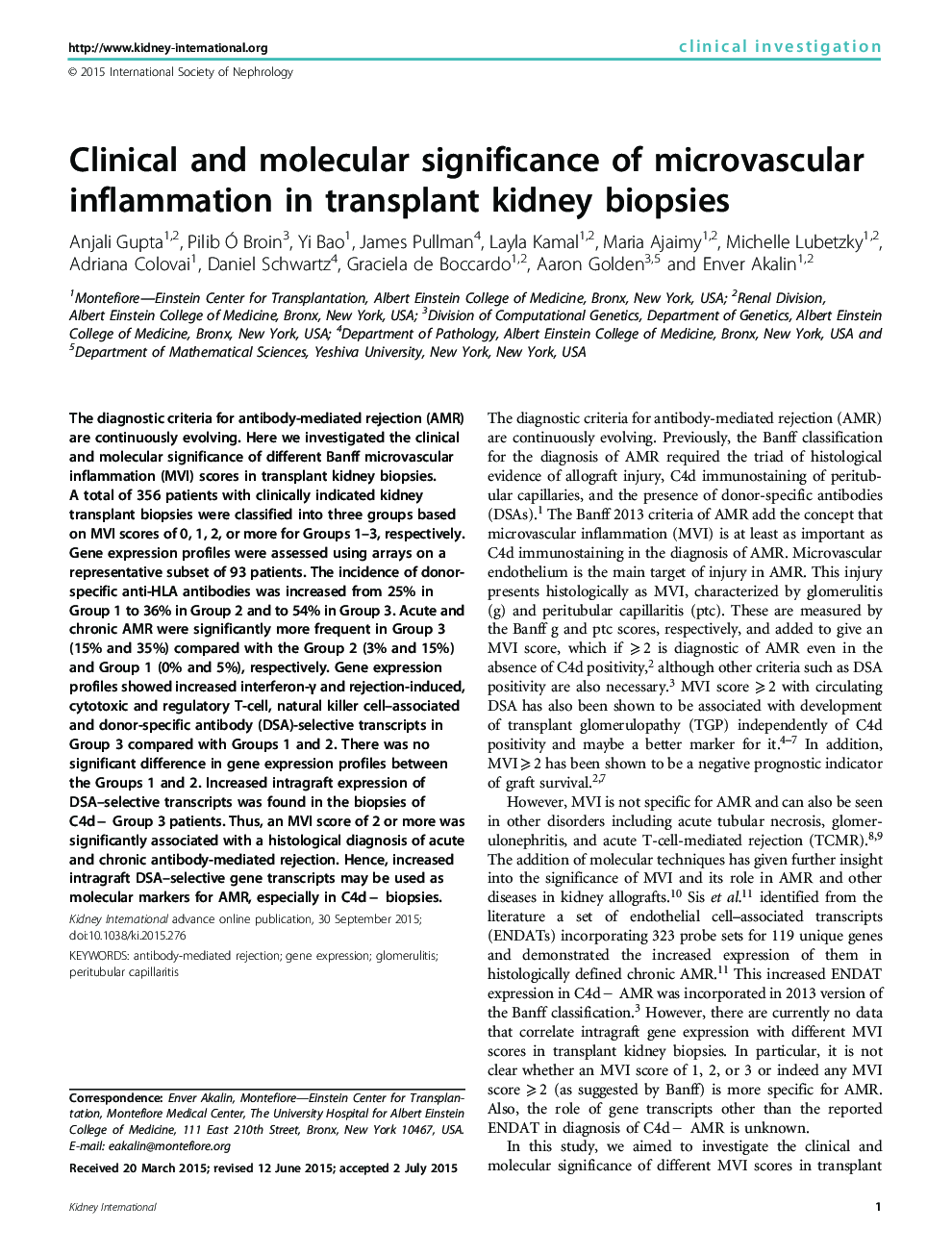| Article ID | Journal | Published Year | Pages | File Type |
|---|---|---|---|---|
| 6161702 | Kidney International | 2016 | 9 Pages |
Abstract
The diagnostic criteria for antibody-mediated rejection (AMR) are continuously evolving. Here we investigated the clinical and molecular significance of different Banff microvascular inflammation (MVI) scores in transplant kidney biopsies. A total of 356 patients with clinically indicated kidney transplant biopsies were classified into three groups based on MVI scores of 0, 1, 2, or more for Groups 1-3, respectively. Gene expression profiles were assessed using arrays on a representative subset of 93 patients. The incidence of donor-specific anti-HLA antibodies was increased from 25% in Group 1 to 36% in Group 2 and to 54% in Group 3. Acute and chronic AMR were significantly more frequent in Group 3 (15% and 35%) compared with the Group 2 (3% and 15%) and Group 1 (0% and 5%), respectively. Gene expression profiles showed increased interferon-γ and rejection-induced, cytotoxic and regulatory T-cell, natural killer cell-associated and donor-specific antibody (DSA)-selective transcripts in Group 3 compared with Groups 1 and 2. There was no significant difference in gene expression profiles between the Groups 1 and 2. Increased intragraft expression of DSA-selective transcripts was found in the biopsies of C4dâ Group 3 patients. Thus, an MVI score of 2 or more was significantly associated with a histological diagnosis of acute and chronic antibody-mediated rejection. Hence, increased intragraft DSA-selective gene transcripts may be used as molecular markers for AMR, especially in C4dâ biopsies.
Related Topics
Health Sciences
Medicine and Dentistry
Nephrology
Authors
Anjali Gupta, Pilib Ã. Broin, Yi Bao, James Pullman, Layla Kamal, Maria Ajaimy, Michelle Lubetzky, Adriana Colovai, Daniel Schwartz, Graciela de Boccardo, Aaron Golden, Enver Akalin,
